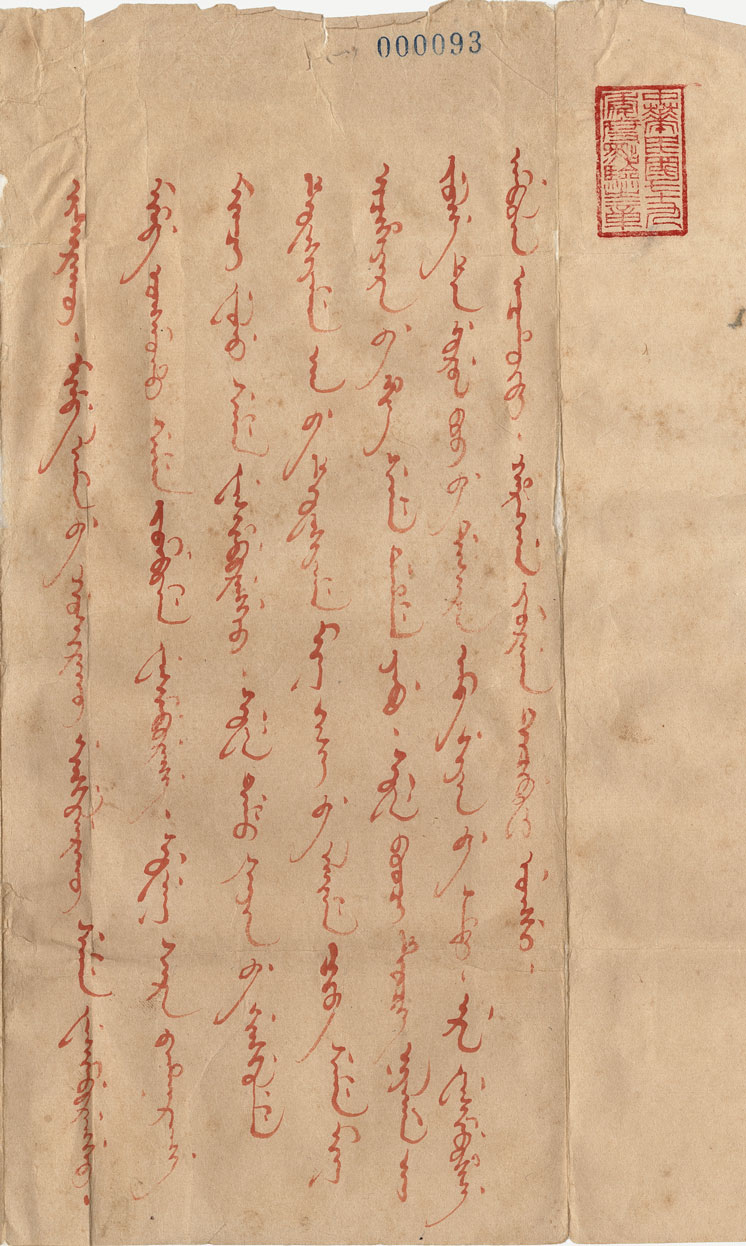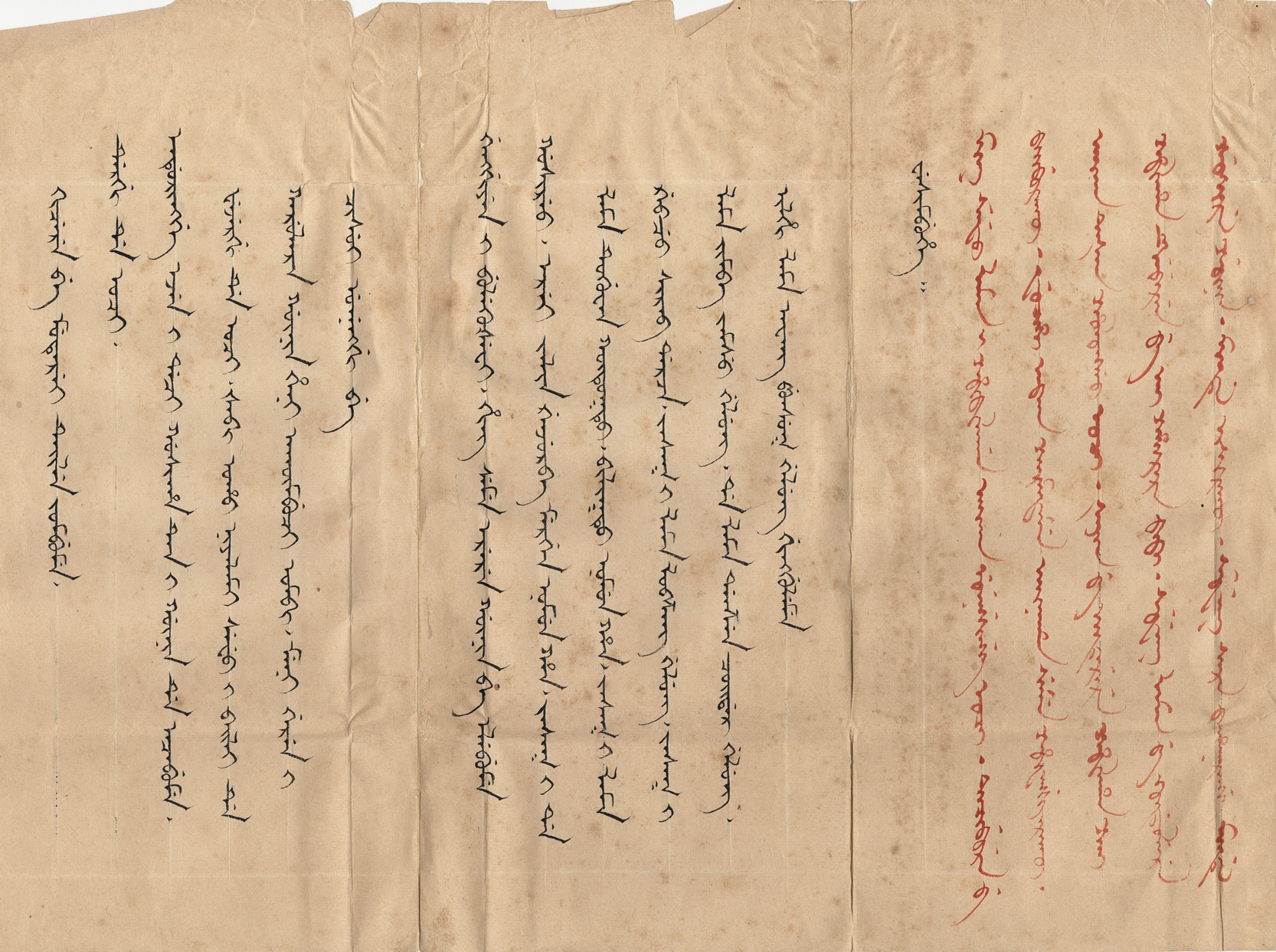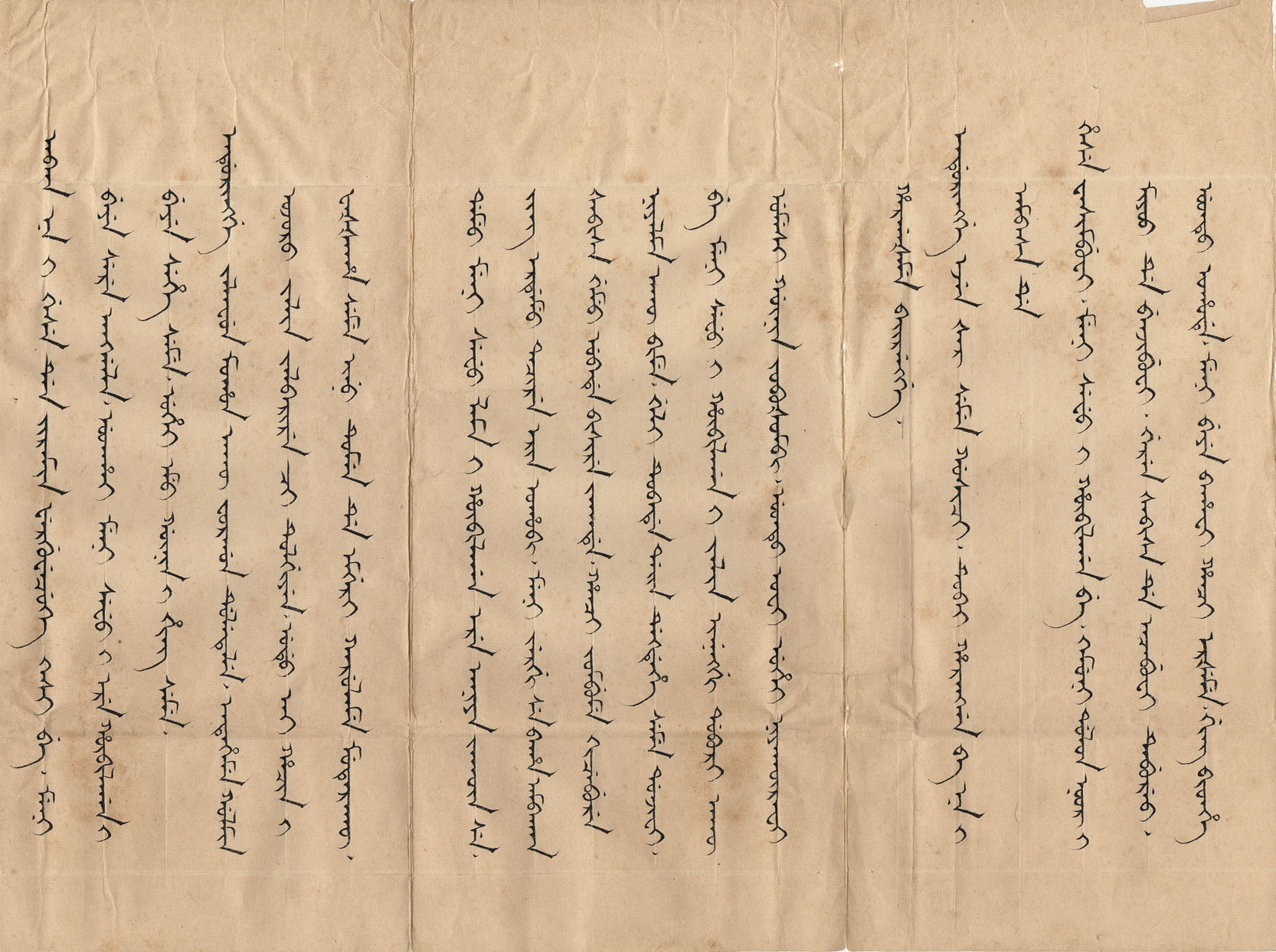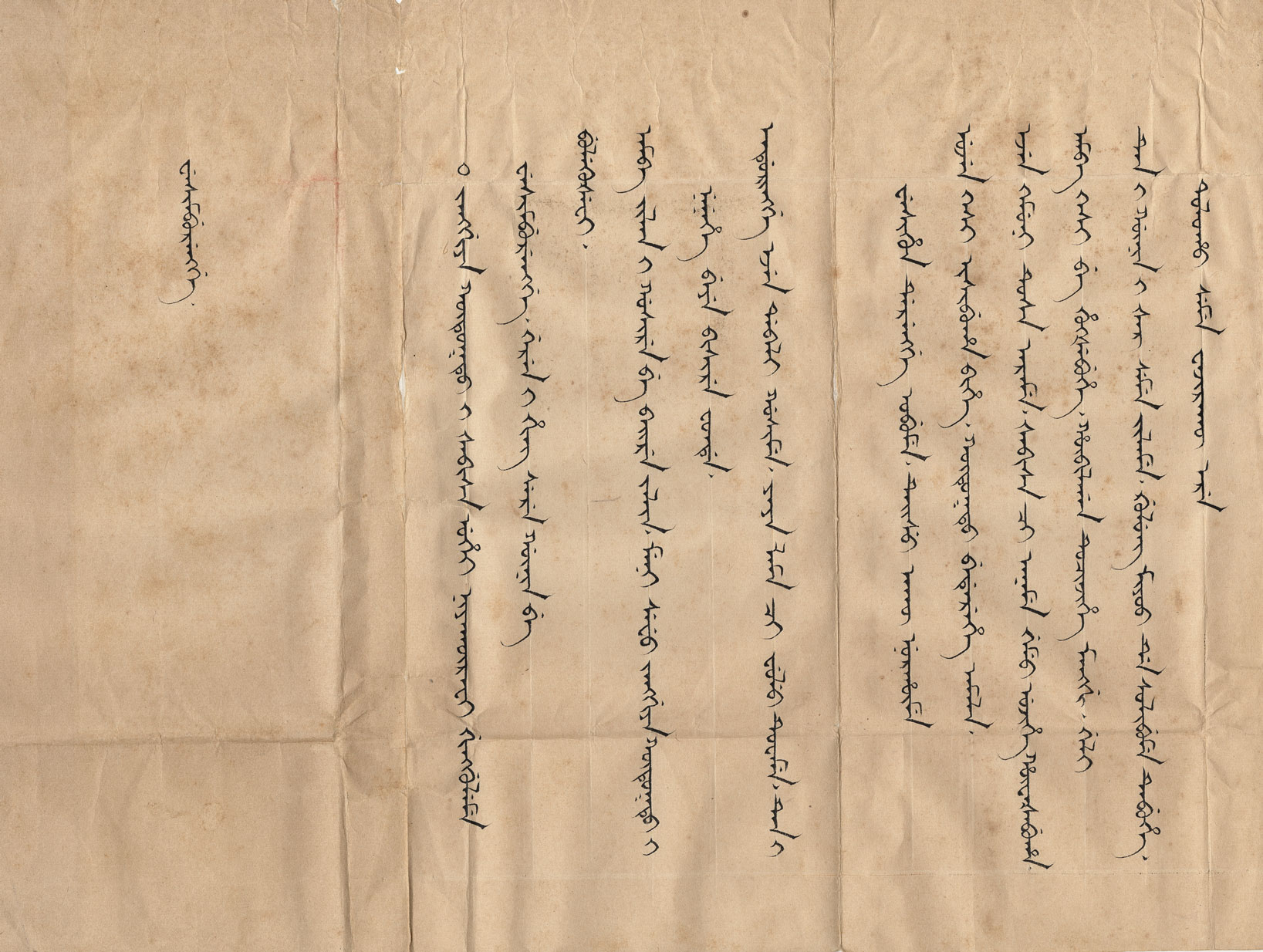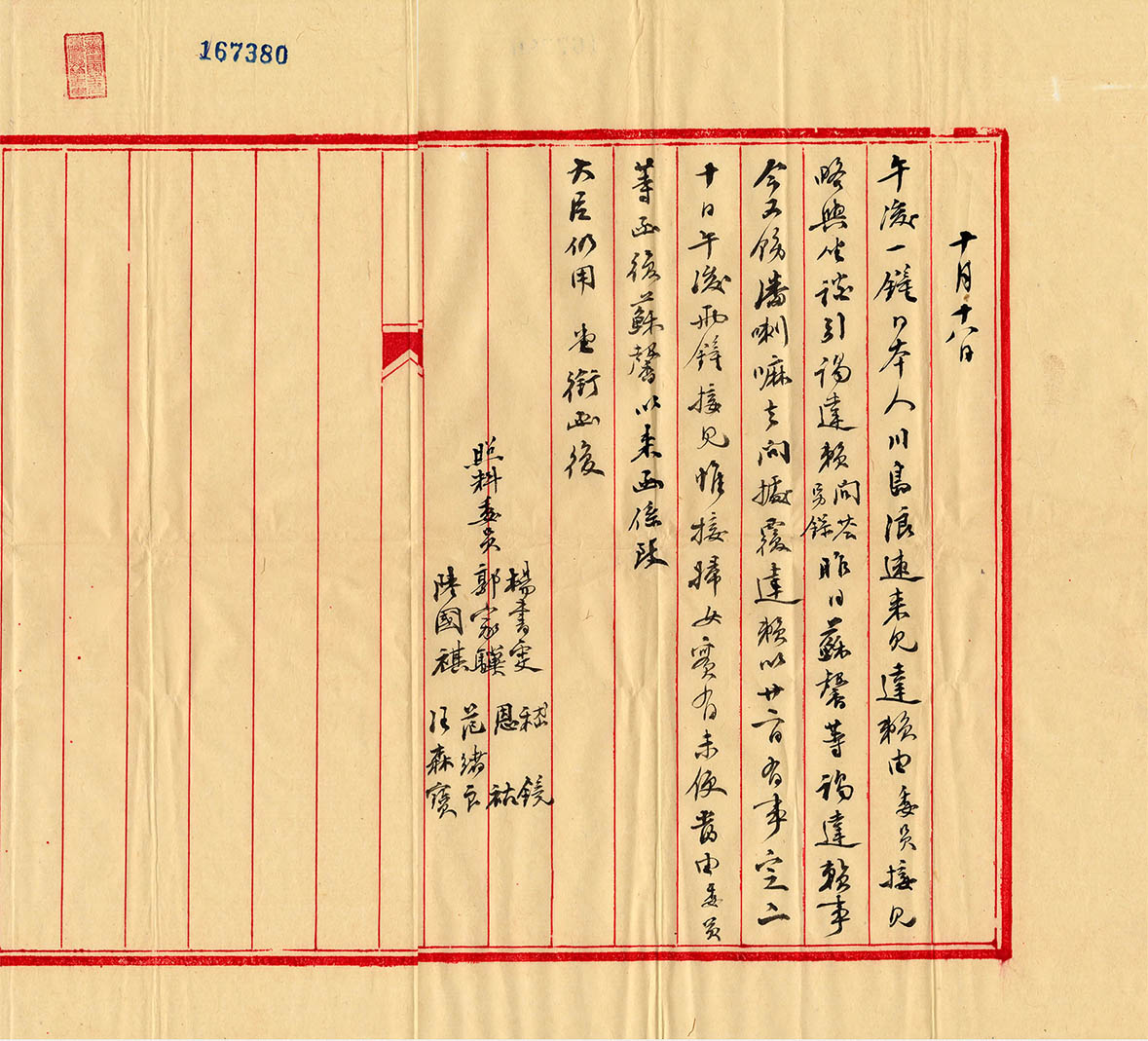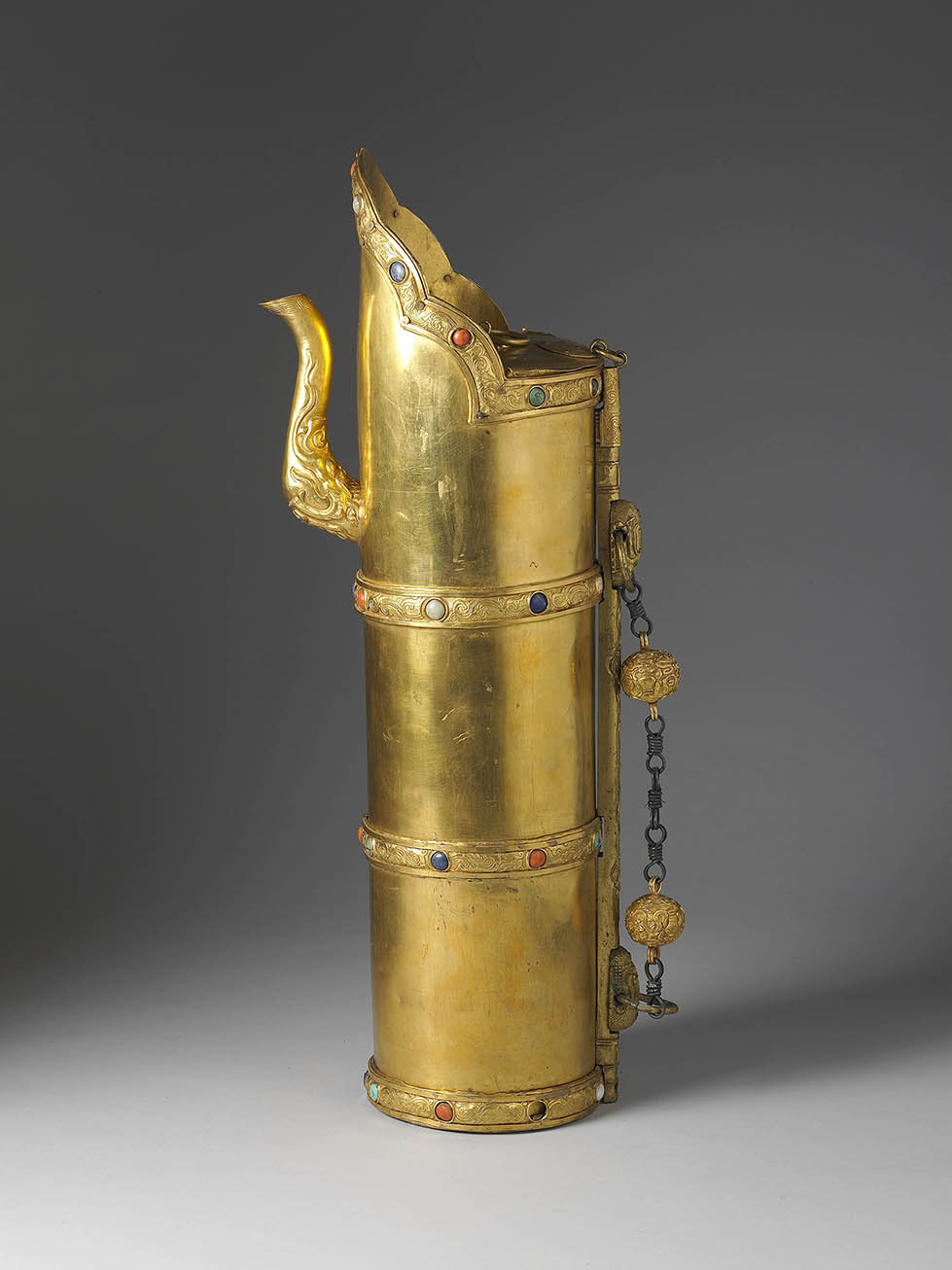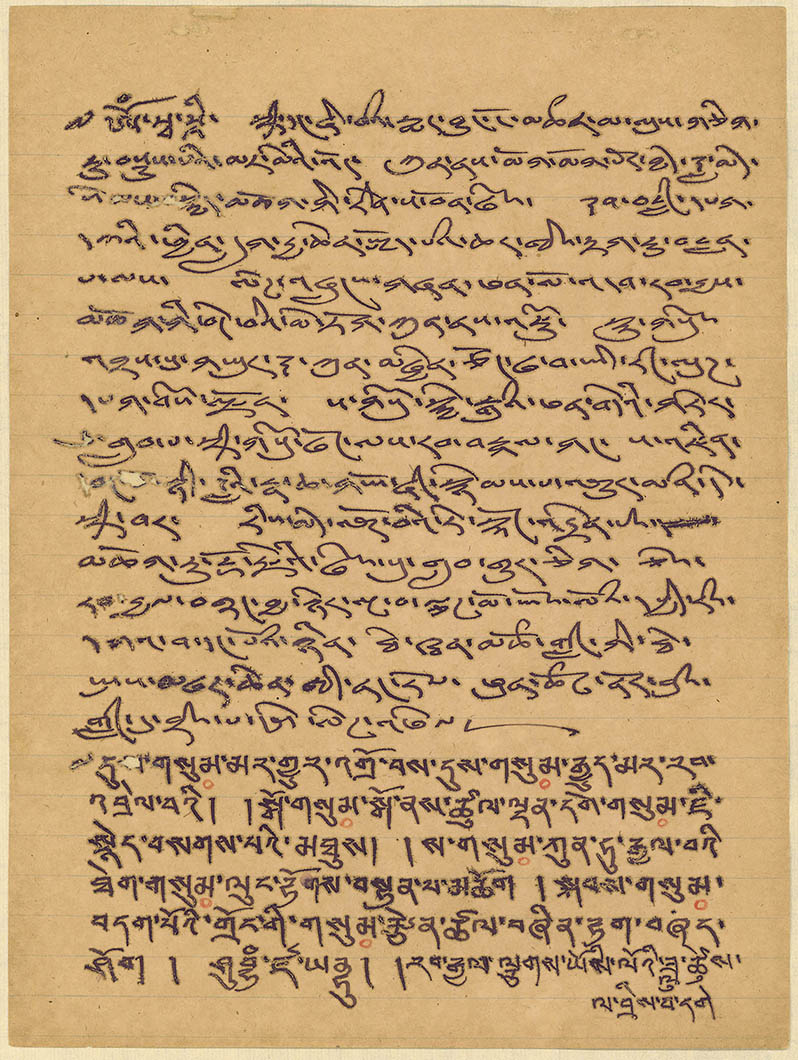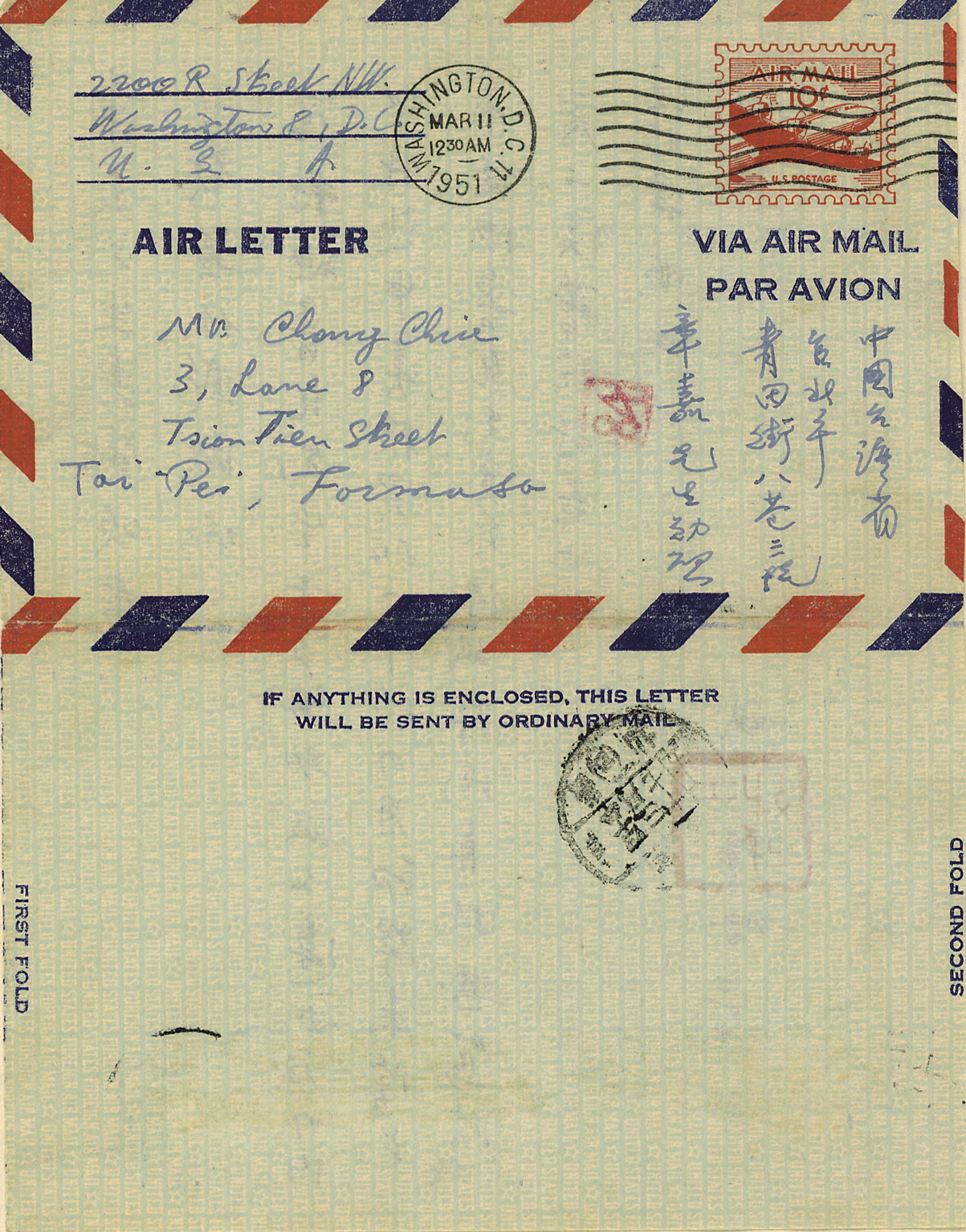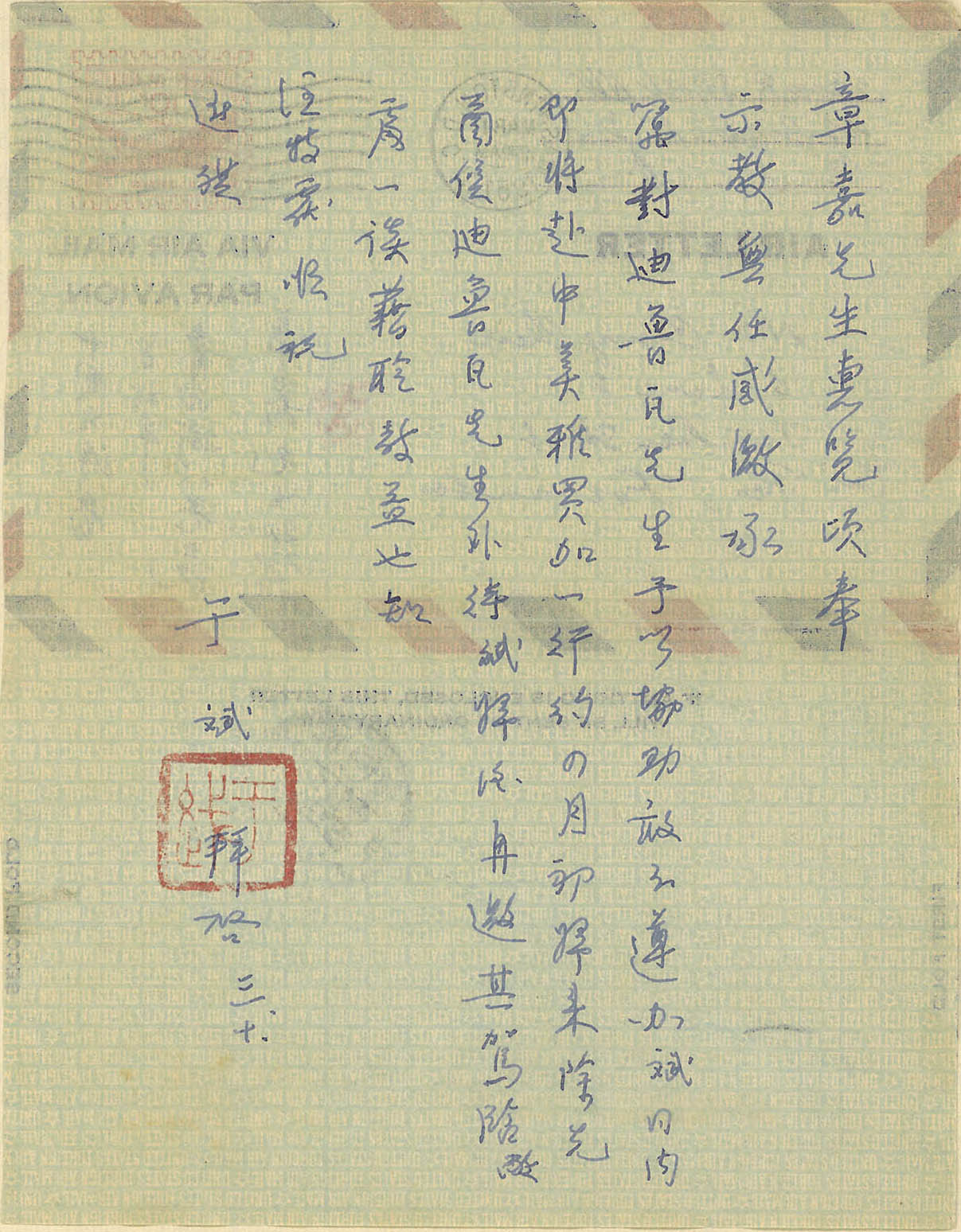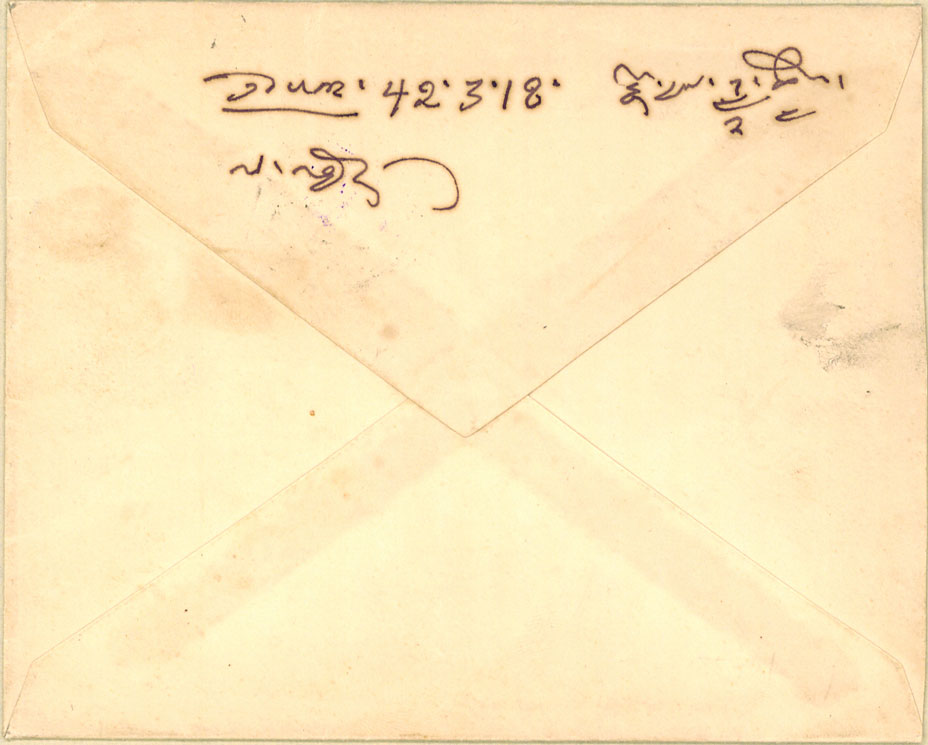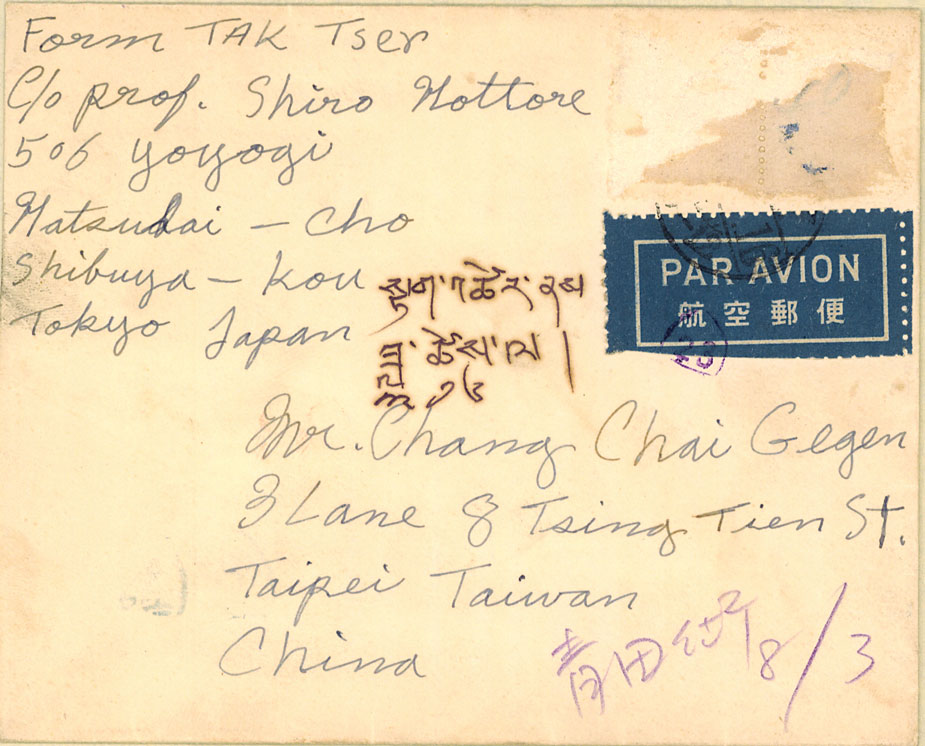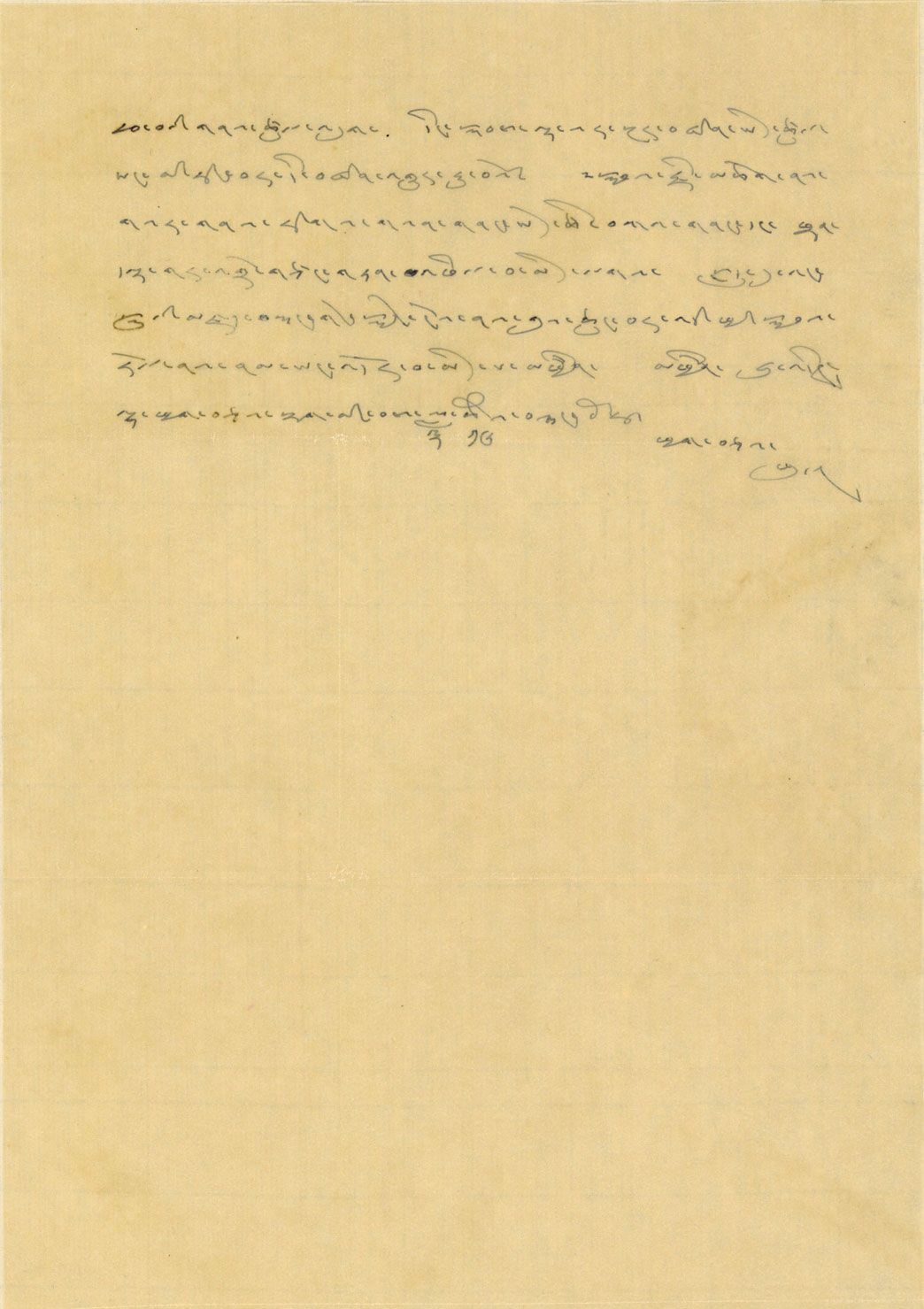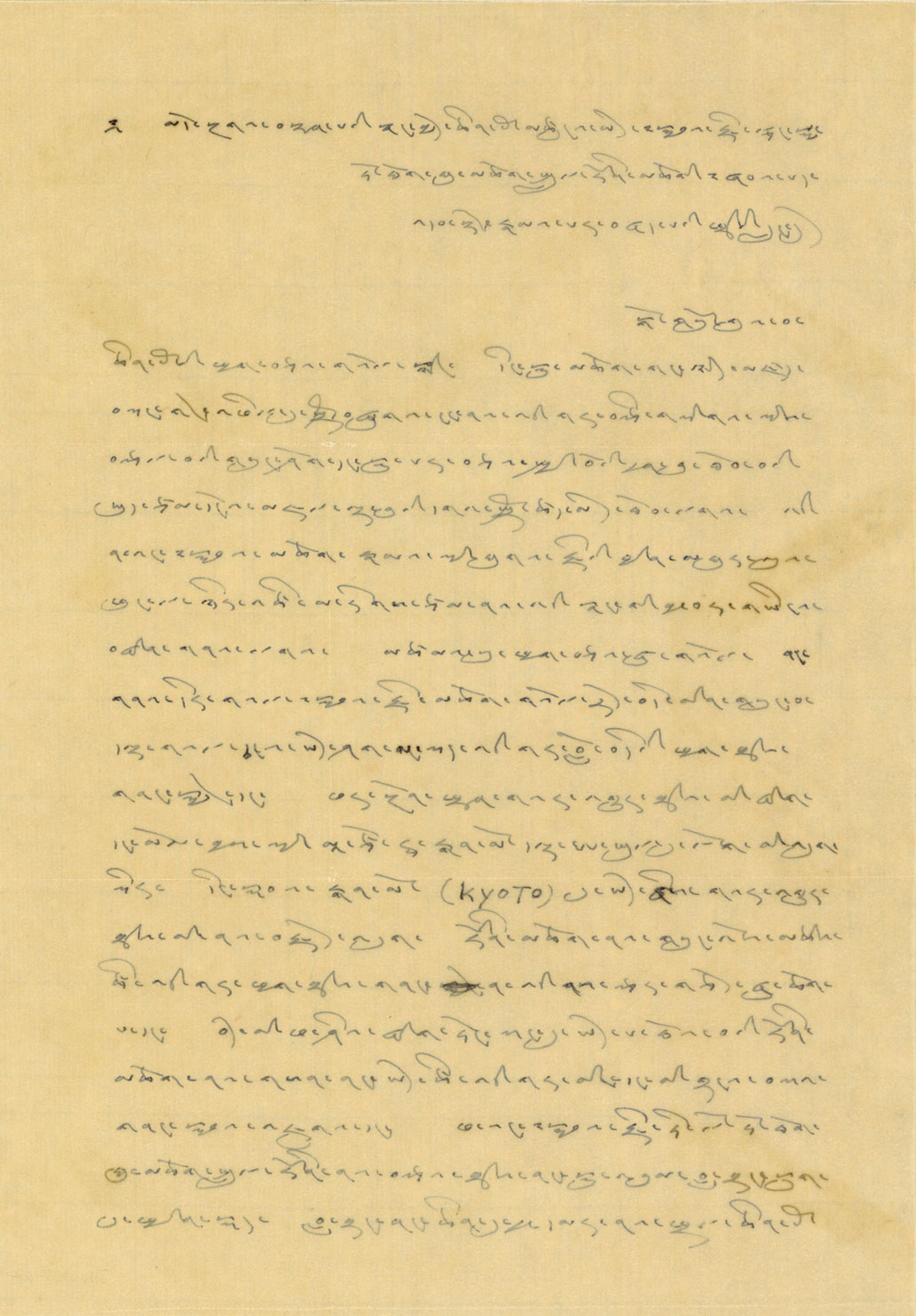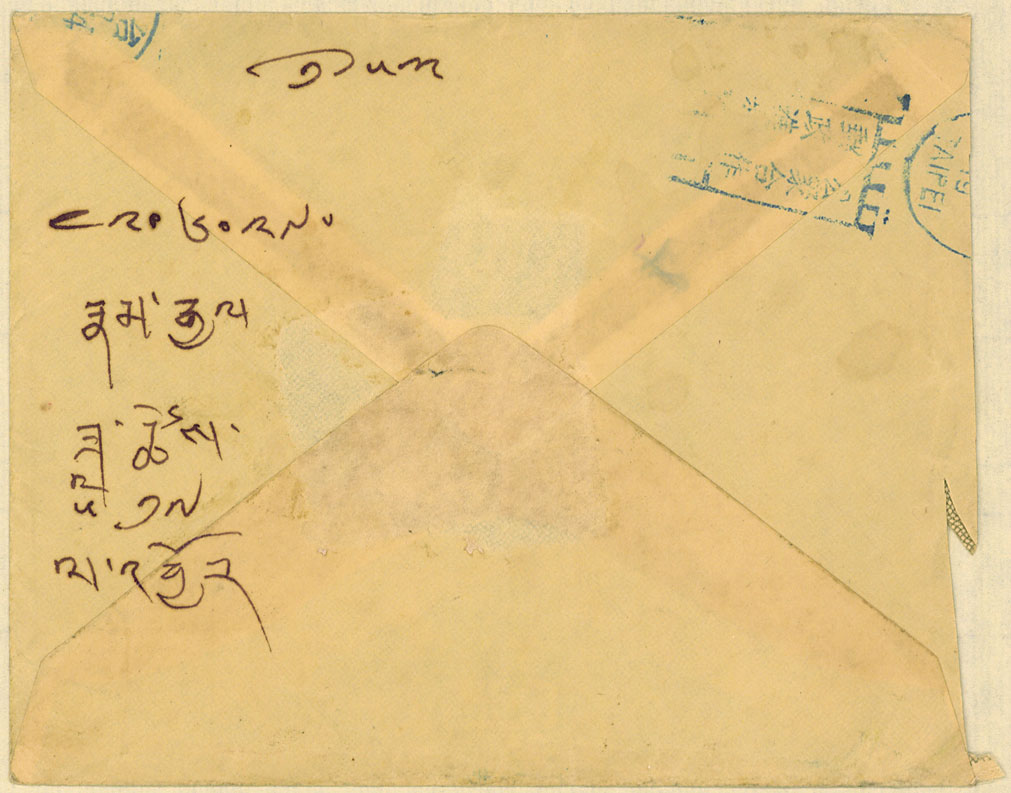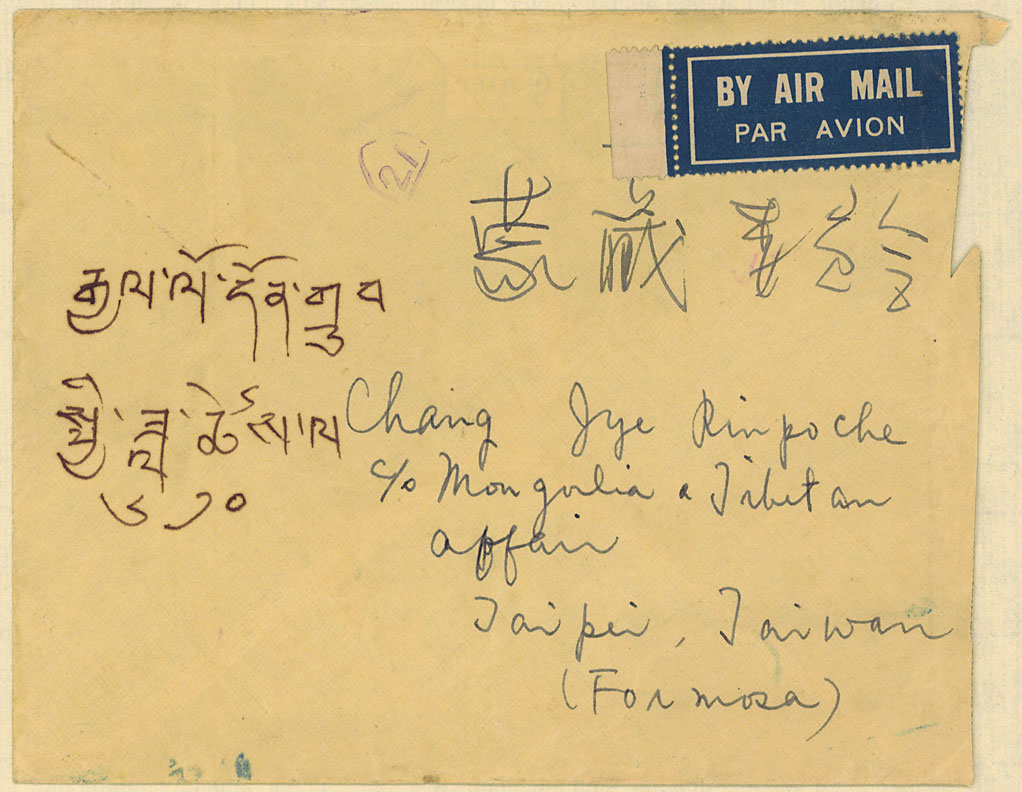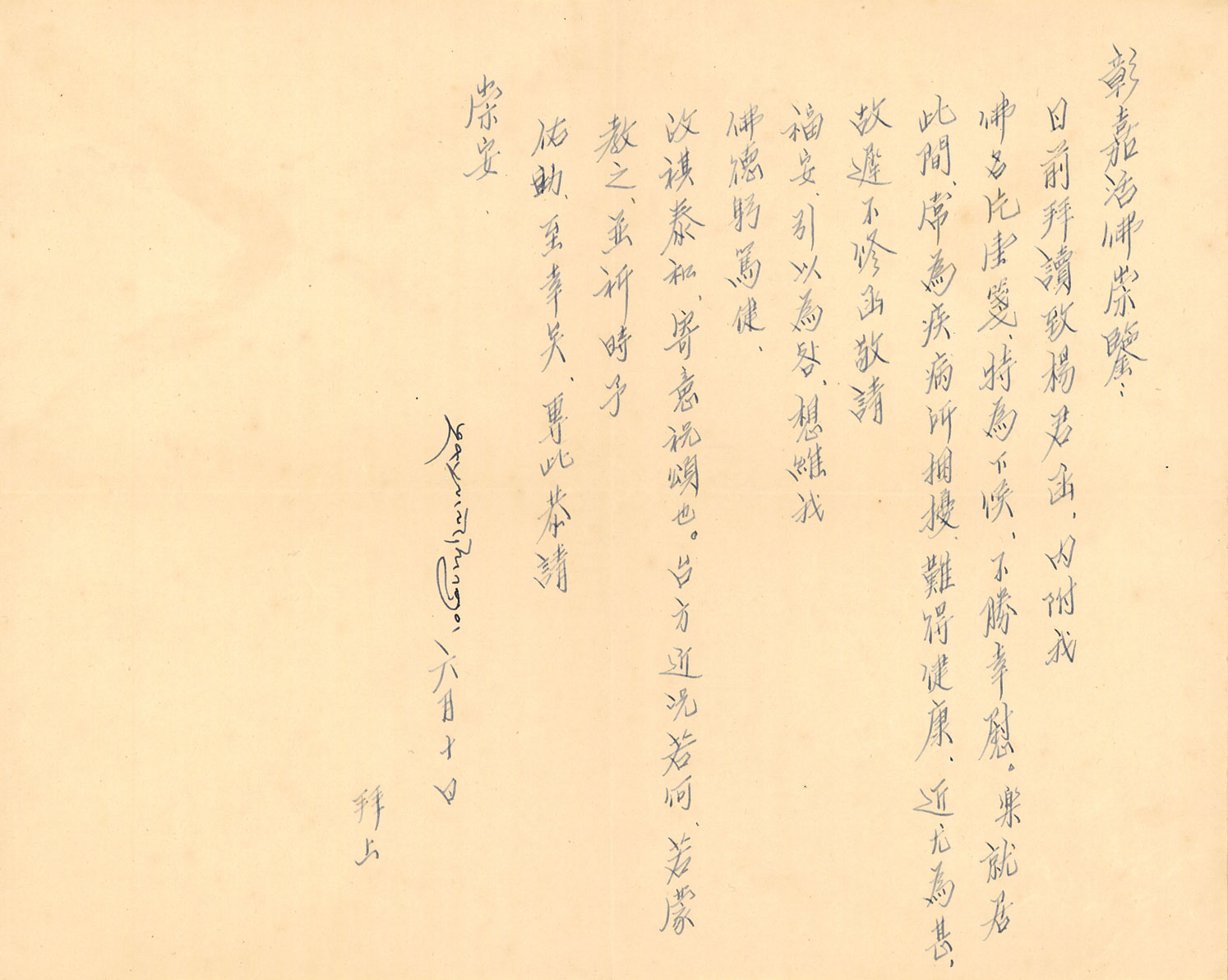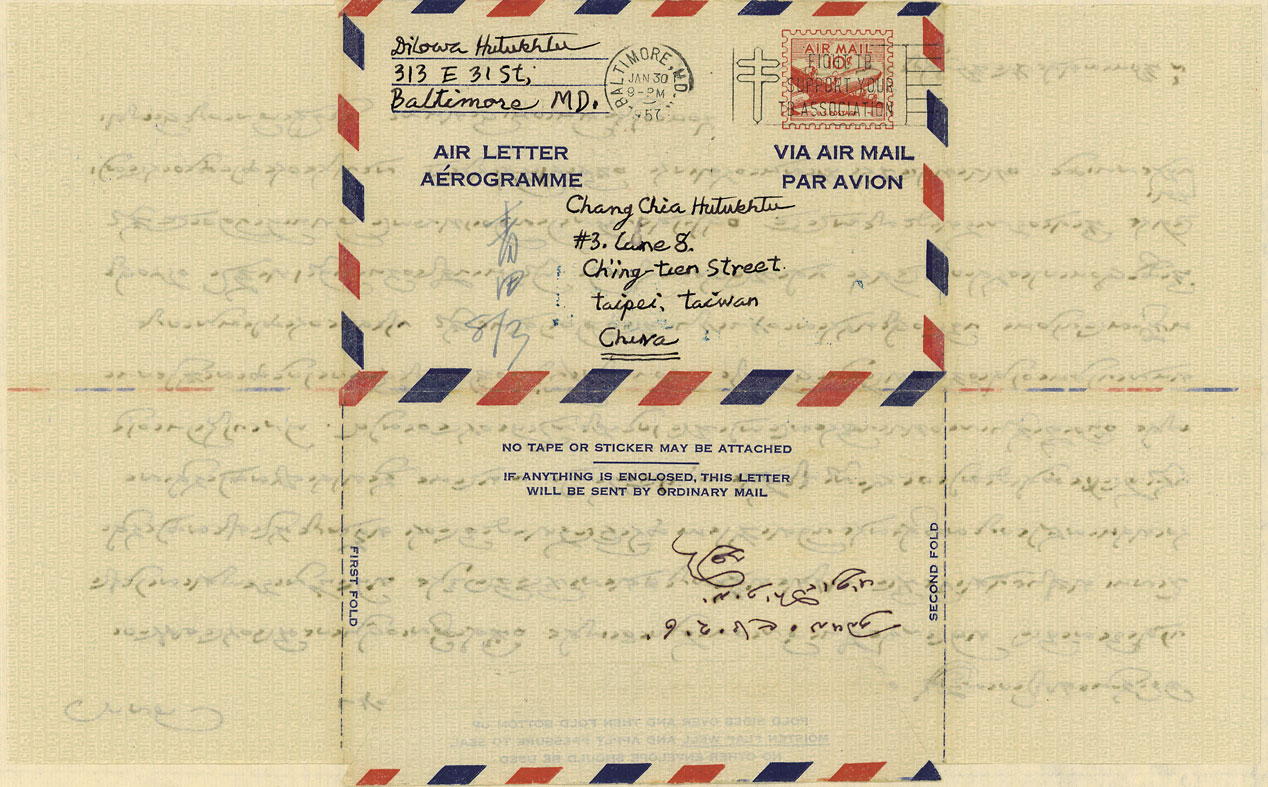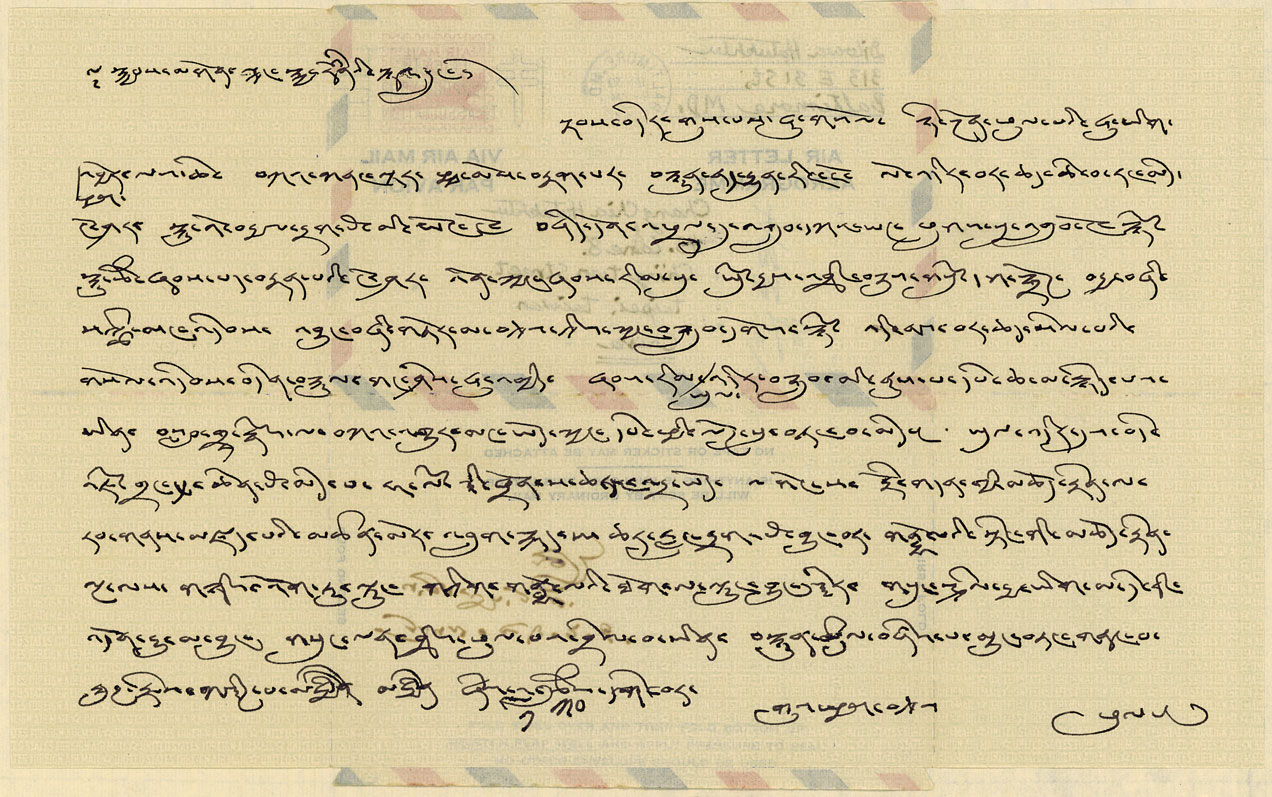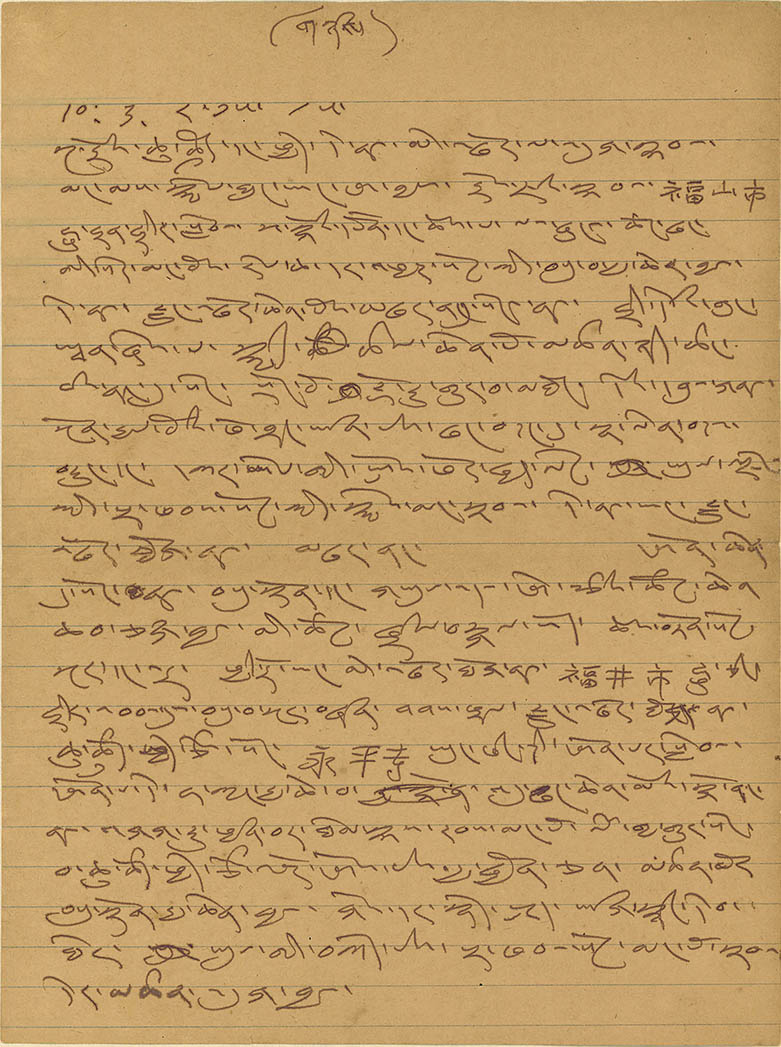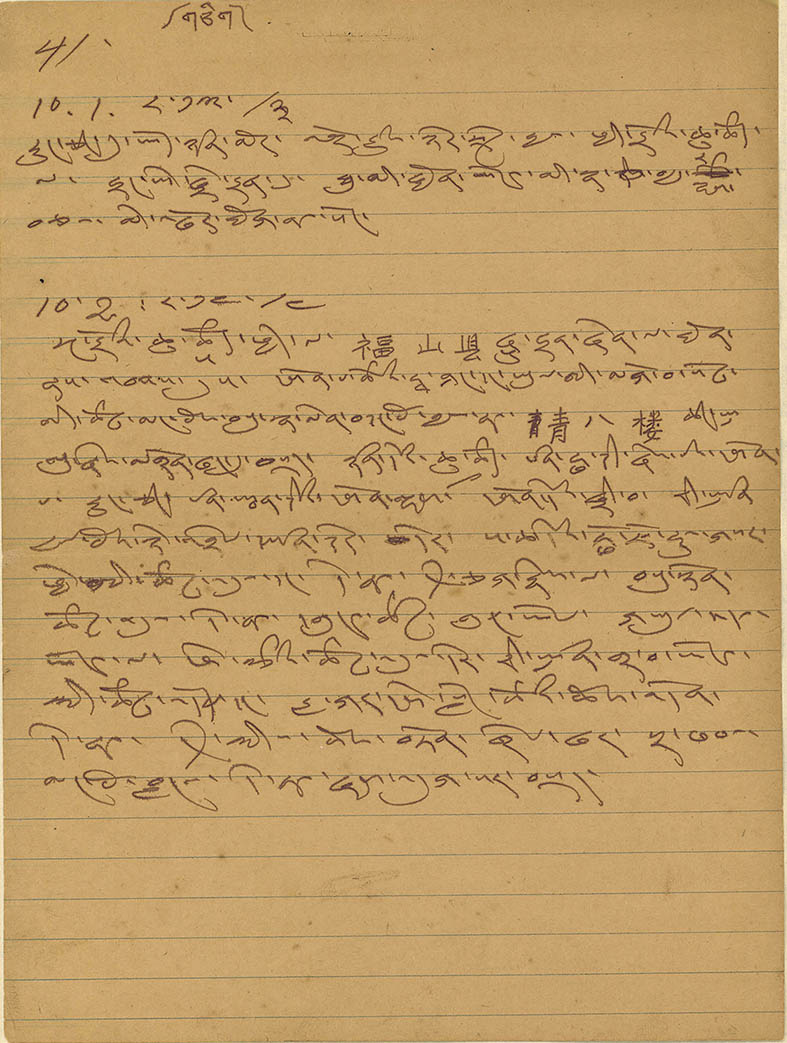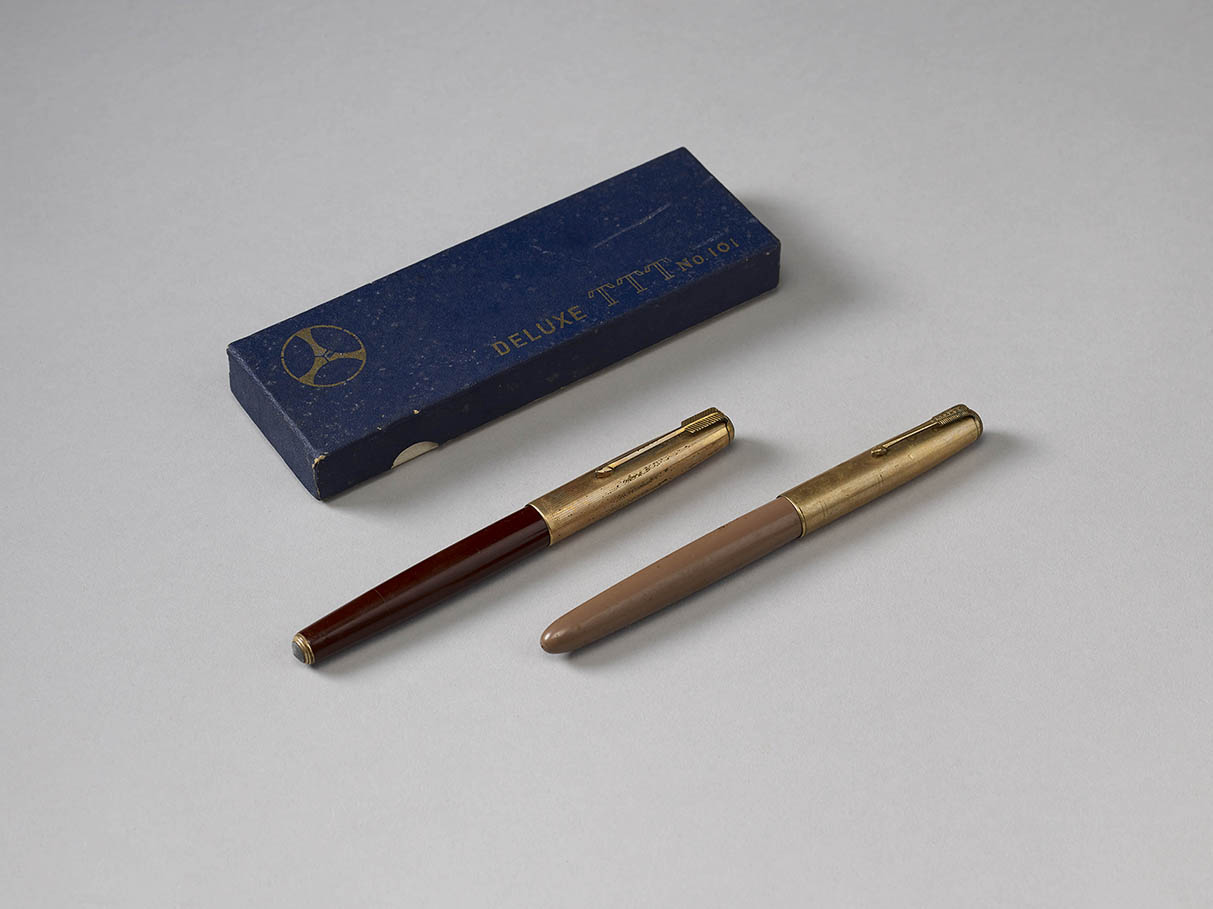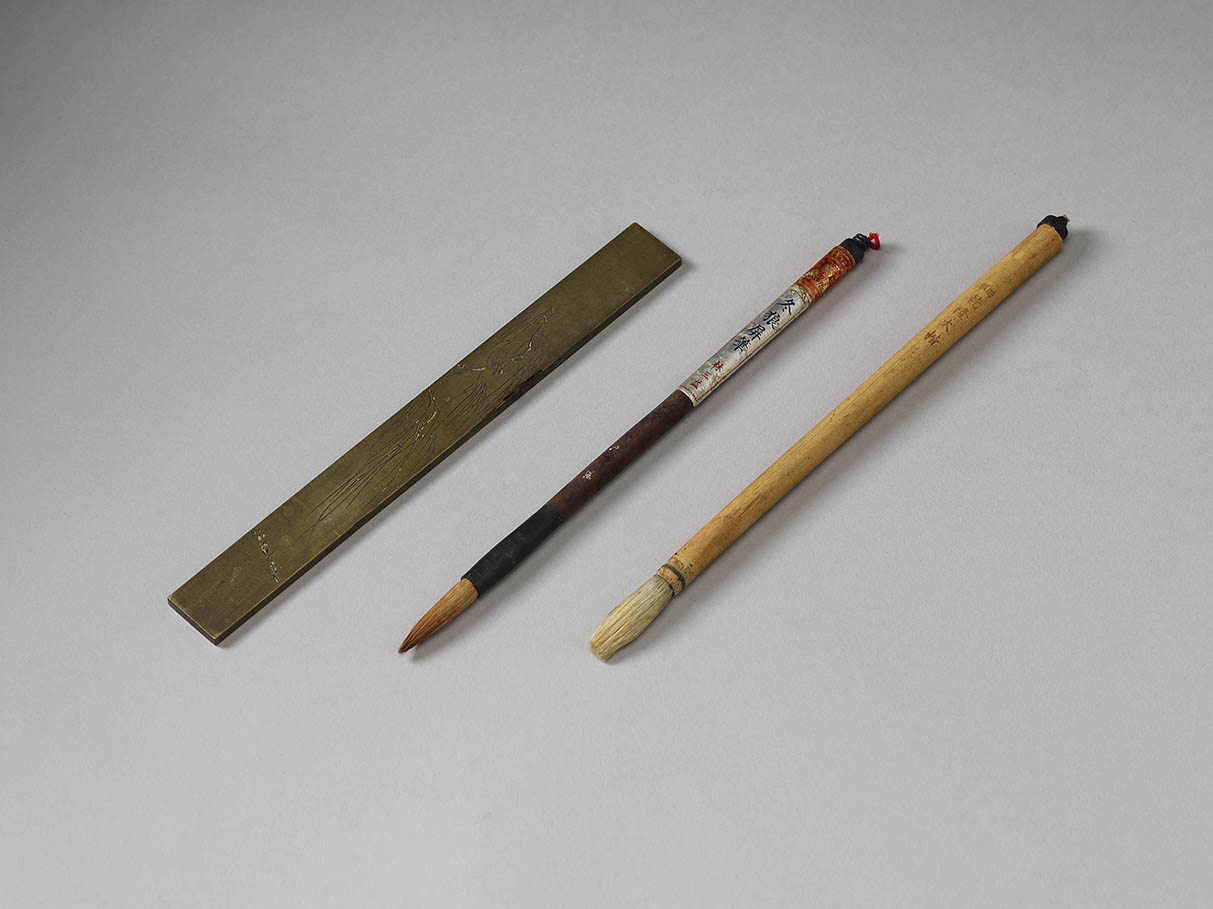A Glimpse into the Lives of Khubilghans
The Gelug lineages of khubilghans were mostly formed during the Qing dynasty. They were active not only in Tibetan regions, but also in Outer and Inner Mongolias; even the capital of Beijing had eight important Khutukhtus based there. The khubilghans in different regions played different roles and exerted varying levels of influence. The important ones endorsed by emperors were more than religious teachers; they were strongly influential on the political and economic development of their regions and were effectively preeminent politico-religious leaders. This section showcases a variety of objects giving an overview of the khubilghans' personal lives as well as their religious and political work during the Qing dynasty. The Tibetan Buddhist artifacts housed in the Qing court also offer a glimpse into the deep influence of khubilghans on the faith of the Qing imperial household.
Public and Private Life
The Tibetan-style tea ware and religious objects provide a glimpse into the daily habits of the living Buddhas, and the correspondence of the Thirteenth Dalai Lama (1876-1933) with foreign diplomats while he was in Beijing, together with the documents and letters of the Seventh Changkya (1891-1957), are microcosms of the day-to-day affairs of Qing dynasty living Buddhas.
Manchu palace memorial pledging allegiance and vowing to follow imperial edicts
- Submitted by the disciples of Changkya Khutukhtu
- Kangxi reign (1661-1722), Qing dynasty
The Second Changkya Khutukhtu, Ngawang Losang Chöden (1642-1715), helped mediate between two Mongol tribes to settle a dispute in the 25th year of the Kangxi reign (1686). His success brought him to the attention of the emperor (r. 1661-1722). In the 32nd year of the Kangxi reign (1693), the Second Changkya was summoned to Beijing and appointed the imperial mentor of Buddhism. Although this palace memorial in Manchu from the Kangxi reign is not dated, it was likely submitted by the Second Changkya's disciples after he had arrived in Beijing. In this memorial, they pledge allegiance to the emperor and vow to follow imperial edicts.
List of questions and answers exchanged between the Japanese Kawashima Naniwa and Dalai Lama in a meeting
- Submitted by Jijing (1877-?), et al.
- 18th day of the 10th month of the 34th year of the Guangxu reign (November 11, 1908), Qing dynasty
In the 6th month of the 29th year of the Guangxu reign (1903), British troops reached Gyantse and advanced on Lhasa, forcing the Thirteenth Dalai Lama to flee to China for aid. During his flight, he made Kulun, Xining, and Mount Wutai his residences. In the 8th month of the 34th year (1908), the Dalai Lama arrived in Beijing by invitation to celebrate the birthday of Empress Dowager Cixi (1835-1908). He took the opportunity to meet with several diplomats stationed in the capital. The Kawashima Naniwa (1866-1949) mentioned in this document was a Japanese working on political campaigns in China in the early 20th century and one of the people pushing for making Manchuria and Mongolia independent states. The famous spy Kawashima Yoshiko (1907-1948) was his adopted daughter.
Gold mdong-mo with gemstone inlay
- Produced by imperial workshop, Qing dynasty (1644-1912)
Butter tea is a part of everyday life for Tibetans and Mongolians. To make it, first you boil a brick of tea to make a strong infusion, which you then pour into a special tea churn (mdong-mo in Tibetan) that contains a small amount of butter and salt. The combination is then churned vigorously until it becomes emulsified.
The Seventh Changkya Khutukhtu's prayer for the prosperity of state and religion in Mongolia
- Dated February 7, 1951 (1st day of the 1st month of the xinmao year on Tibetan calendar)
- Collection of the Mongolian and Tibetan Cultural Center, Ministry of Culture
The prayer was composed on the 1st day of the 1st month in the year of the iron hare on Tibetan calendar by the Seventh Changkya Khutukhtu at his abode of Yuanman Baozhou (Precious Island of Great Perfection) in Taipei, Taiwan. Following the prayer is a short biography, in rhymed-verse style, of Kanjurwa Khutugtu (1914-1978). Kanjurwa was a living Buddha from Inner Mongolia, and it is very likely that the prayer for state and religious prosperity was specifically written for him.
Letter from Cardinal Paul Yu Pin to the Seventh Changkya Khutukhtu
- Dated March 10, 1951
- Collection of the Mongolian and Tibetan Cultural Center, Ministry of Culture
This letter was sent from Washington D.C., while Cardinal Paul Yu Pin (1901-1978) was in the United States, assisting the Nationalist Government on diplomatic affairs and preaching to overseas Chinese communities. The "Mr. Diluwa" mentioned in the letter was the Mongolian living Buddha Diluwa Khutugtu (1884-1965), who was friendly with the Seventh Changkya Khutukhtu. Since Diluwa Khutugtu was living in nearby Baltimore at the time, in the letter Cardinal Yu says he will invite Diluwa to meet with him.
Letter from Thubten Jigme Norbu, eldest brother of the Fourteenth Dalai Lama, to the Seventh Changkya Khutukhtu, expressing concern for his health and briefing on the status the Kumbum Monastery and the political situation in Lhasa
- Dated March 16, 1953
- Collection of the Mongolian and Tibetan Cultural Center, Ministry of Culture
The Dalai Lama's elder brother Thubten Jigme Norbu (1922-2008) hailed from the Kumbum Monastery in Xining and knew the Seventh Changkya Khutukhtu. In 1952, Thubten Jigme Norbu left California to attend a meeting in Japan and sent a letter to the Seventh Changkya from the Tsukiji Hongwanji Monastery in Tokyo. In the letter, Thubten Jigme Norbu asks after the Seventh Changkya's health and the Tibetans who arrived in Hong Kong, and describes the dire situation of the Kumbum Monastery and impending changes coming to Lhasa.
Letter from Gyalo Thondup, second eldest brother of the Fourteenth Dalai Lama, to the Seventh Changkya Khutukhtu
- Dated June 10, 1953
- Collection of the Mongolian and Tibetan Cultural Center, Ministry of Culture
While still at a young age, the Dalai Lama's second eldest brother Gyalo Thondup (b. 1928) left to study at the Central School of Governance in Nanjing. He is well-versed in the Chinese language. By 1950, Gyalo Thondup and his family had already fled to Darjeeling in India, from where this letter was sent. The "Yang" mentioned in the letter is Yang Shijie, Tibetan name mgon po byams pa. He was a Tibetan leader from Zoigê County, Sichuan, who had taken refuge in Kalimpong in India. Yang was also in correspondence with the Seventh Changkya Khutukhtu.
Letter from Diluwa Khutugtu to the Seventh Changkya Khutukhtu
- Dated January 30, 1957
- Collection of the Mongolian and Tibetan Cultural Center, Ministry of Culture
Diluwa Khutugtu was a Mongolian living Buddha who left Mongolia in 1931. During the Second Sino-Japanese War, he and the Seventh Changkya Khutukhtu were both in Sichuan, where they came to know each other. In 1949, Diluwa Khutugtu left for the United States and became the first Mongolian religious leader to live in exile. In this letter, Diluwa Khutugtu wishes the Seventh Changkya a long and healthy life. Unfortunately, the wish was not granted. The Seventh Changkya's gastric cancer returned in February that year, and he passed away at the National Taiwan University Hospital on March 4.
Journal written by the Seventhth Changkya Khutukhtu
- Dated October 1-3, 1952
- Collection of the Mongolian and Tibetan Cultural Center, Ministry of Culture
This collection consists of three journals, records of the Seventh Changkya Khutukhtu's visit to Japan from September 24 to October 21, 1952. At the time, Japan was hosting the second General Conference of the World Fellowship of Buddhists, and the Seventh Changkya attended as the head of the Chinese Buddhist delegation. After the Conference, he visited monasteries in Tokyo, Osaka, and Nara, as well as other important Buddhist centers on Mount Koya and Mount Hiei. The two pages on display here are from the Seventh Changkya's diary from October 1 to 3.
Daily necessities of the Seventh Changkya Khutukhtu
- Republican era
- Collection of the Mongolian and Tibetan Cultural Center, Ministry of Culture
This collection consists of 30 items in 20 groups. All were used by the Seventh Changkya Khutukhtu. Apart from everyday items such as dining utensils and stationery, the collection also contains other types of necessities: the negative holders and photo retouching tools relate to his personal hobbies, the incense jar and the incense powder pouch are traditional Tibetan objects, and the lighter was used for lighting incense.
